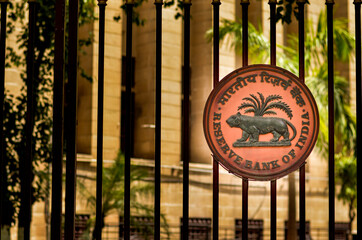News Highlight
Repo-Rate increases to 6.25%: RBI raises the benchmark interest rate by 35 basis points.
Key Takeaway
- Repo-Rate or the key lending rate was increased to 6.25% by the monetary policy committee (MPC), which consists of three members from the RBI and three external members.
Reasons for the hike
- Retail inflation is expected to continue to be higher than the 6% tolerance level.
- The weakening of the Indian rupee due to the appreciation of the US dollar.
- The lower growth.
How will it impact borrowers and depositors?
- Borrowers:
- It will result in a hike in lending rates.
- The borrowing will become costlier.
- Depositors:
- The depositors will benefit as banks are expected to raise their deposit rates.
The Reserve Bank of India
- The RBI was established in 1935 in accordance with the provisions of the Reserve Bank of India Act, of 1934.
- The RBI’s affairs are governed by a central board of directors.
- The board is appointed by the government of India.
- Functions of the RBI:
- The central bank issues and regulates currency notes.
- It keeps reserves to secure monetary stability and is called a banker to banks.
- The RBI plays a vital role in the economic growth of the country and in maintaining price stability.
- Powers of the RBI:
- The Reserve Bank of India Act, 1934 and the Banking Regulation Act, 1949 have given the RBI broad powers of supervision and control over commercial Banks – relating to:
- Licensing and establishments
- Branch expansion
- Liquidity of their assets
- Management and methods of working
- Amalgamation (merger)
- Reconstruction and liquidation.
- The Reserve Bank of India Act, 1934 and the Banking Regulation Act, 1949 have given the RBI broad powers of supervision and control over commercial Banks – relating to:
Repo-Rate and Reverse Repo-Rate
- Repo Rate
- Repo stands for “Repurchase Option”
- Repo Rate is the rate at which the RBI lends to other banks by buying securities with an agreement that the bank will buy them back on a certain date.
- Repo lending is a short-term option to meet commercial banks’ liquidity requirements.
- The increased repo rate will discourage banks from borrowing from the RBI and lending to their customers.
- This, in turn, will reduce the liquidity and demand in the market.
- On the other hand, a decreased repo rate will encourage banks to borrow and lend to customers increasing the liquidity and demand in the market.
- Components of Repo-Rate
- Preventing “squeeze” in the economy
- As a result of inflation, the central bank modifies the Repo rate.
- It aims to manage inflation in order to steer the economy.
- Hedging and Leverage
- By buying securities and bonds from banks and offering cash in exchange for deposited collateral, the RBI tries to hedge and leverage.
- Short-Term Borrowing
- Up to an overnight period, the RBI makes short-term loans, following which banks buy back their deposited securities at a set price.
- Collateral and Securities
- The RBI takes gold, bonds, and other forms of collateral.
- Cash Reserve or Liquidity
- To maintain liquidity or cash reserves as a precaution, banks borrow money from the Reserve Bank of India (RBI).
- Reverse Repo-Rate
- The reverse repo rate is the interest rate that the Reserve Bank of India pays to commercial banks when they borrow money from them.
- In other words, the reverse repo is the rate charged by commercial banks in India to park their excess money with the Reserve Bank of India for a short period of time.
The Monetary Policy Committee (MPC)
- About
- It was created in 2016.
- It was created to bring transparency and accountability to the process of deciding monetary policy.
- MPC determines the policy interest rate required to achieve the inflation target.
- The committee comprises six members and Governor RBI acts as an ex-officio chairman.
- Three members are from the RBI, and three are selected by the government.
- The inflation target is to be set once every five years.
- It is set by the government of India in consultation with the Reserve Bank.
- Instruments of Monetary Policy
- Both direct and indirect instruments are used to implement monetary policy. A few include:
- Repo-Rate
- Reverse Repo-Rate
- Liquidity Adjustment Facility (LAF)
- Marginal Standing Facility (MSF)
- Bank Rate
- Cash Reserve Ratio (CRR)
- Statutory Liquidity Ratio (SLR)
- Open Market Operations (OMOs)
- Market Stabilisation Scheme (MSS)
- Both direct and indirect instruments are used to implement monetary policy. A few include:
Pic Courtesy: freepik
Content Source: The Hindu



